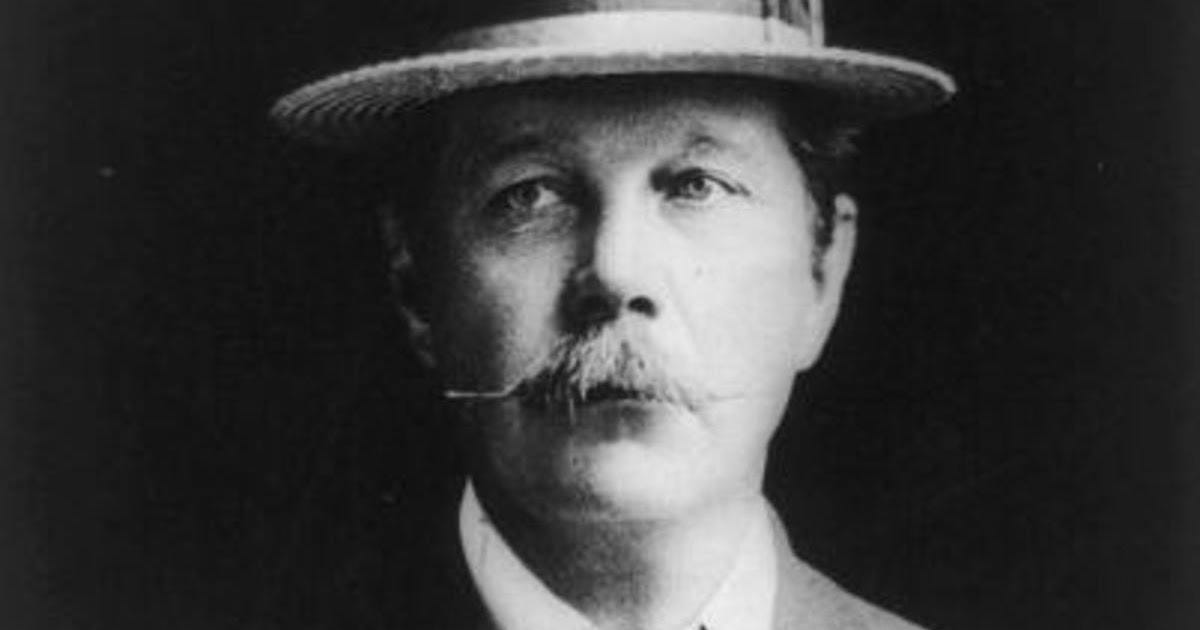Studying the lives of incredible creatives can help us all learn. As a lover of all things crime, Arthur Conan Doyle has always been a favourite of mine.
One of my favourite stories about the great man is his competition with Oscar Wilde to write a novel. The competition led to Doyle writing Sign of Four, which secured his place as a writer, and Wilde writing The Picture of Dorian Gray.
A Doctor's Life
Doyle was born in Edinburgh, Scotland, in 1859 to a prosperous Irish family. This was an excellent year for literature as it was the same year Darwin published The Origins of Species.
His education began at home in a small Edinburgh school. At nine, he enrolled in the Jesuit College in Lancashire to prepare to enter Stonyhurst College.
It wasn't long before the young Doyle showed a love of medicine and started reading at Edinburgh University. He obtained his doctorate in 1885, researching a little-known condition known as syphilis.
After qualifying, Doyle had a short time as a ships doctor, where he sailed around the coast of West Africa, returning in 1882 to set up his surgery in Plymouth.
Establishing his own surgery gave him the freedom to pursue his hobby of writing.
Writing Times
In 1887, Doyle published his first Holmes book, A Study in Scarlet. Several publishers initially rejected the book before Ward, Lock & Co. bought it for £25.
Shortly after, a chance meeting in a hotel led to his friendship with Oscar Wilde. After this success, he wrote several short stories with Holmes as the main character. The success of these stories led him to abandon medicine completely.
The time he wrote most of his novels was interesting. The public at the time was being plagued by reports of a serial killer on the loose, none other than Jack the Ripper.
Fans even wrote to him asking whether Holmes could try to catch the killer. Doyle was wise enough to know that you could not mix fact and fiction. However, as a crime writer, I am sure he had an opinion on who the killer might be.
Sherlock Holmes
Clearly, the police department of the time made drastic mistakes in the hunt for Jack the Ripper. It may have been this background that made Holmes such a popular figure.
Doyle had an urge to write more than just Sherlock Holmes books. In 1894, he killed Holmes off and was prepared to leave the stories there.
A public outcry ensued, and it became clear that he would need to revive the detective; his American publisher also offered him a large sum for the detective to return. In The Return of Sherlock Holmes, he brings his famous detective back with a clever plan.
He went on to write several other books in the Holmes collection and other novels. None of his other work ever gained the fame that Sherlock Holmes did.
Personal Tragedy
Doyle dealt with his fair share of personal tragedy. In December 1892, he moved to Switzerland for healthier, clean air. His wife Louise suffered from tuberculosis, and Doyle thought the air could help her condition.
During the autumn of 1895, to help his wife recover further, he stayed in Egypt for several months. As the conflict between the British and the dervishes grew, Doyle turned his hand to war correspondent for the Westminster Gazette.
The health of his wife continued to worsen. She developed a tumour that caused partial paralysis. She grew weaker and died on 4 July 1906.
In 1907, he married Jean Elizabeth Leckie. The couple had been friends for years out of respect for his wife. The couple moved to Sussex, where he had three children: Denis, Adrian and Jean.
When World War I started, Doyle once again wrote about the war in detail. His eldest son Kingsley was seriously wounded at the Battle of the Somme. He died in 1918. The following year, he would lose his brother as well.
More than Sherlock
It surprises many people that Doyle was a prolific writer who wrote many books, short stories and essays that had nothing to do with the great detective.
One of his famous works is a pamphlet justifying Britain's involvement in the Boer War. This received great acclaim, and he was knighted for it.
He also twice ran for parliament, although both attempts were unsuccessful.
Doyle produced work that has inspired people for years and was responsible for designing a detective genre of his own. The genre where a civilian helps solve the case.
He was also the first to introduce the public to behaviour science, profiling and working undercover. Holmes uses several disguises to help solve cases.
In 1929, Doyles suffered his first heart attack. Against the advice of his doctors, he insisted on speaking at a ceremony commemorating Armistice. The strain of the speaking engagement resulted in him spending weeks in bed afterwards.
He recovered slowly, but on 7 July 1930, he died from a fatal heart attack. His last words to his wife at his side were, "You are wonderful".



He has naturally been the subject of many biographies since his death. I recommend Daniel Stashower's "Teller Of Tales" for a good overview of his life outside of Holmes.